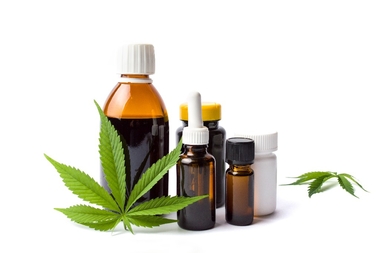Medical Marijuana: What the Research Shows

By Jennifer Palmer | June 23, 2018
(This story was updated June 25).
One of the central issues in the debate over the medical-marijuana question on Tuesday’s election ballot is whether scientific research confirms that marijuana can offer health benefits.
So far, marijuana has not been approved as a medicine by the Food and Drug Administration, but on Monday the agency approved the first drug derived from marijuana, called Epidiolex. The drug contains cannabidiol and will be used to treat two forms of epilepsy in children.
The FDA requires clinical trials in hundreds, then thousands, of human patients to determine benefits and risks, and not enough have been done yet on marijuana, according to the National Institute on Drug Abuse. Legal restrictions and variability in the concentration of the plant’s psychoactive chemicals also make it difficult to study, according to the National Center for Complementary and Integrative Health, a federal research agency.
Here are some research findings on marijuana:
>A study released this year found patients’ cannabis use increased their risk of prescription opioid abuse. Published in the American Journal of Psychiatry in January 2018.
>Another study found significant reductions in opioids prescribed to Medicare patients in states with medical cannabis laws. Opioid reductions were strongest in states that permit dispensaries (though researchers also found reductions in cultivation-only states.) Published in JAMA Internal Medicine in May 2018.
>A study released last year found that in states where medical marijuana is legal, adults were more likely to use the drug illegally. The study’s lead author said it’s possible adults in those states interpreted the laws to mean marijuana is harmless, and they were exposed to more advertising for marijuana. However, the study can’t draw the conclusion the laws caused the increase in illicit use. The research was drawn from three national studies between 1991 and 2013 and was published in JAMA Psychiatry.
>In a study of patients with severe epilepsy, released in 2015, seizures decreased by an average of 54 percent while taking cannabidiol, a component of marijuana that does not contain THC (the component that causes a “high”.) The study, authored by a New York University researcher,involved 213 people, from toddlers to adults, with a median age of 11.
>The National Institute on Drug Abuse says more research needs to be done on medical marijuana use in pregnant women, who sometimes use marijuana to treat severe nausea related to pregnancy. Some studies have shown an increased risk of stillbirth, and some associations have been found between marijuana use and future hyperactivity disorders in their children. But no human research connects marijuana use and miscarriage; evidence is mixed whether marijuana use by pregnant women is associated with low birth rate.
>For people living with cancer, medical marijuana can mitigate symptoms such as anorexia, chemotherapy-induced nausea and vomiting, pain, insomnia and depression, according to the National Cancer Institute. Animal studies have shown a possible direct anticancer effect by inhibiting tumor growth while protecting normal cells.

Oklahoma Watch is a nonprofit, nonpartisan media organization that produces in-depth and investigative journalism on a range of public-policy issues facing the state. For more Oklahoma Watch content, go to www.oklahomawatch.org.
All rights reserved, The Gayly 6/25/2018 @ 5:48 p.m. CST.





